Table of Contents
ToggleIn a world where takeout coffee and impulse buys can drain wallets faster than a leaky faucet, saving money can feel like an uphill battle. Enter saving challenges—the fun twist on budgeting that turns financial discipline into a game. Who knew that stashing away cash could be as thrilling as binge-watching your favorite series?
Understanding Saving Challenges
Saving challenges present a fun and engaging method for individuals to improve their saving habits. They transform money management into a rewarding experience.
Definition of Saving Challenges
Saving challenges refer to various structured methods designed to encourage individuals to save money consistently. Participants commit to specific goals, often focusing on small, manageable amounts. Examples include the 52-week challenge, where individuals save an increasing dollar amount each week. Others might involve daily savings, like the penny challenge, where participants save a penny on the first day, two on the second, and so on. These challenges cater to diverse saving preferences, making it easier for individuals to find one that suits their lifestyle.
Importance of Saving Challenges
Saving challenges hold significant importance for financial well-being. They boost motivation by providing achievable goals that lead to tangible results. Participants often experience a sense of accomplishment as they reach milestones. Such challenges encourage disciplined habits, making saving a routine part of their lives. Additionally, increased awareness of spending habits often arises, helping participants understand where adjustments can be made. Engaging in saving challenges leads to a gradual but substantial accumulation of savings over time, promoting overall financial stability.
Types of Saving Challenges

Saving challenges come in various formats, each designed to make saving money engaging and achievable. Understanding these types helps individuals choose the right one to fit their financial goals.
52-Week Saving Challenge
The 52-week saving challenge requires participants to save a specific amount each week, increasing the total saved over the year. The first week starts with saving $1, while the second week requires $2, and so on, culminating in saving $52 during the last week. The total savings at year-end reaches $1,378, making it a motivating endeavor for newbies and seasoned savers alike. This method emphasizes gradual increases in savings, allowing individuals to adjust to higher contributions easily. Utilizing this challenge effectively enhances financial discipline while promoting consistent saving habits.
No-Spend Challenge
The no-spend challenge encourages individuals to refrain from non-essential spending for a designated period, typically ranging from a week to an entire month. Participants still cover necessary expenses, like groceries and bills, while avoiding luxuries such as dining out and entertainment. This challenge cultivates awareness of spending habits and highlights areas for potential savings. Setting specific goals, such as saving a certain amount by the end of the challenge, adds focus. Engaging in a no-spend challenge can lead to significant savings, allowing individuals to reevaluate priorities and foster a mindset of mindful spending.
Benefits of Participating in Saving Challenges
Saving challenges offer several advantages that contribute to effective money management. Engaging with these challenges cultivates positive financial habits while making saving enjoyable.
Building Financial Discipline
Participants develop a structured approach to savings. Consistency becomes easier with challenges like the 52-week model, which increases savings each week. This gradual increase fosters a sense of commitment, pushing individuals to prioritize saving over impulsive spending. They develop a clearer understanding of their financial behaviors, allowing them to identify areas for improvement. Tracking progress also instills motivation, encouraging savers to stick with their goals. Over time, this process nurtures disciplined financial habits essential for long-term stability.
Encouraging Goal-Oriented Saving
Savings goals take on clarity within structured challenges. Setting specific targets helps individuals focus their efforts, enabling them to work toward tangible outcomes. With methods such as the penny challenge, participants can visualize their progress, resulting in increased motivation. Short-term challenges can lead to immediate gratification, reinforcing the habit of saving. Achieving these goals instills a sense of accomplishment, promoting continued engagement with personal finance. Saving challenges ultimately turn financial aspirations into achievable realities, enhancing overall financial well-being.
Tips for Successful Saving Challenges
Participating in saving challenges requires thoughtful strategies to ensure success. These tips provide essential guidance for achieving financial goals while enjoying the process.
Setting Realistic Goals
Establishing achievable goals is crucial for maintaining motivation. Selecting a saving challenge that aligns with current financial circumstances leads to better commitment. Setting smaller milestones within larger goals helps track progress effectively. For example, with the 52-week challenge, beginning with a lower initial amount can boost confidence as savings grow. Evaluating personal budgets creates an understanding of what is manageable without causing undue stress. Reassessing goals periodically allows for adjustments based on changing circumstances, ensuring continued engagement with the challenge.
Tracking Progress
Monitoring savings progress keeps participants motivated and accountable. Utilizing a chart or app helps visualize savings growth clearly. Regular updates on progress encourage participants to stay involved in their savings journey. Sharing milestones with friends or family fosters a supportive environment, making saving feel less isolating. Celebrating small victories reinforces habits, highlighting the connection between consistent effort and financial stability. Keeping a dedicated journal provides a space for reflections on spending habits, making it easier to identify areas for improvement. Each step forward contributes to long-term financial well-being, solidifying the value of saving challenges.
Saving challenges offer an engaging way to enhance financial discipline while making the process enjoyable. By committing to structured methods like the 52-week or no-spend challenge, individuals can cultivate positive habits that lead to significant savings over time. These challenges not only encourage consistent saving but also promote mindful spending and financial awareness.
As participants track their progress and celebrate small victories, they build a sense of accomplishment that reinforces their commitment. Adopting saving challenges can transform financial aspirations into achievable goals and ultimately contribute to long-term financial stability. Embracing these challenges could be the key to unlocking a more secure financial future.



